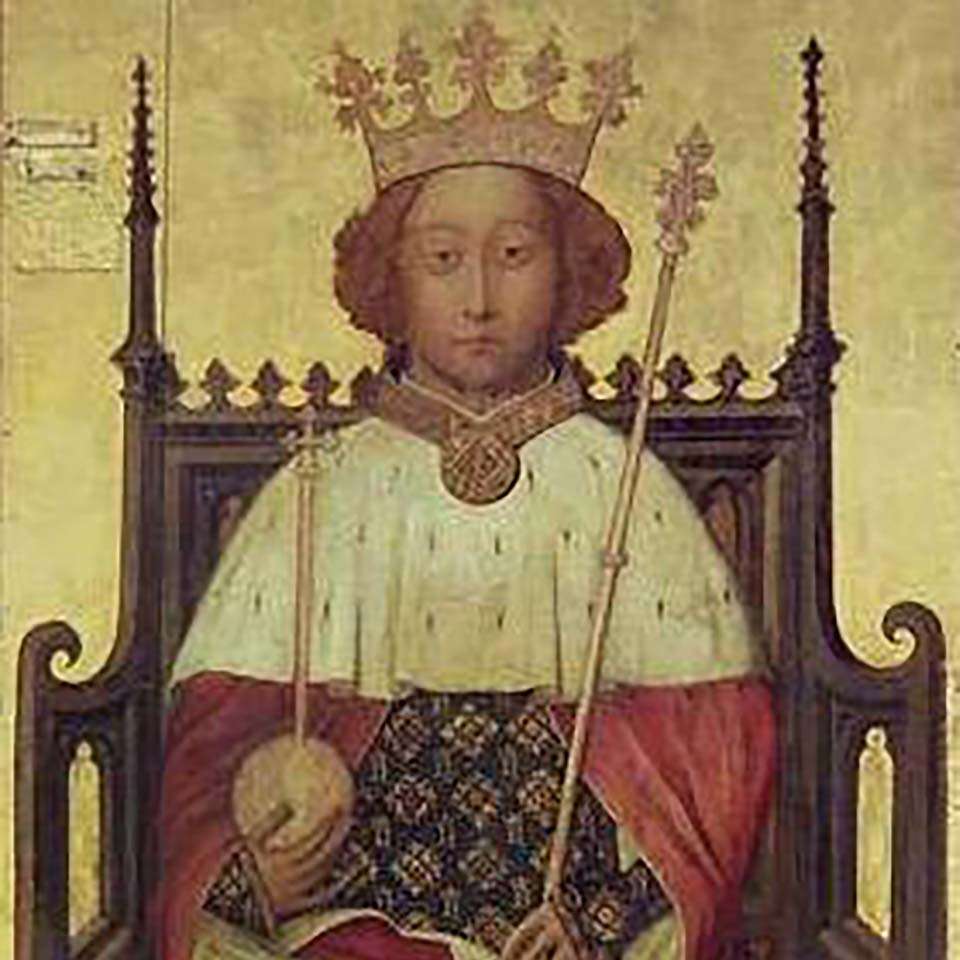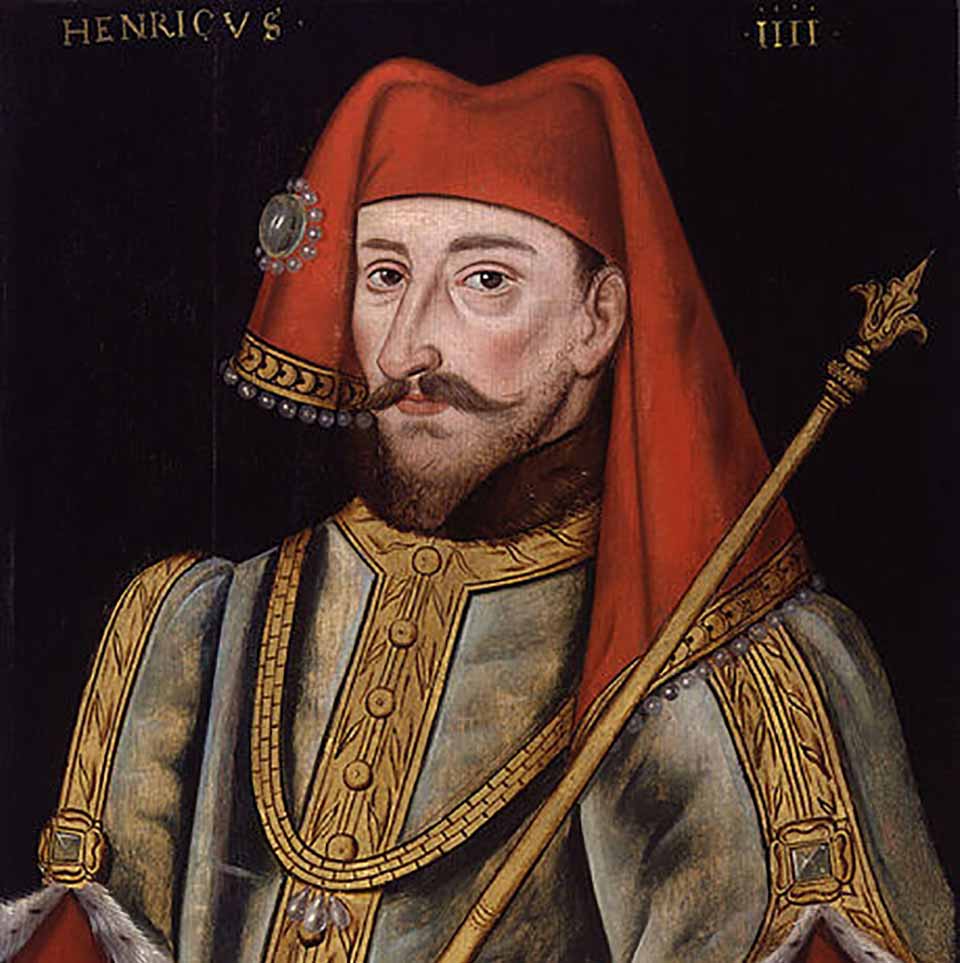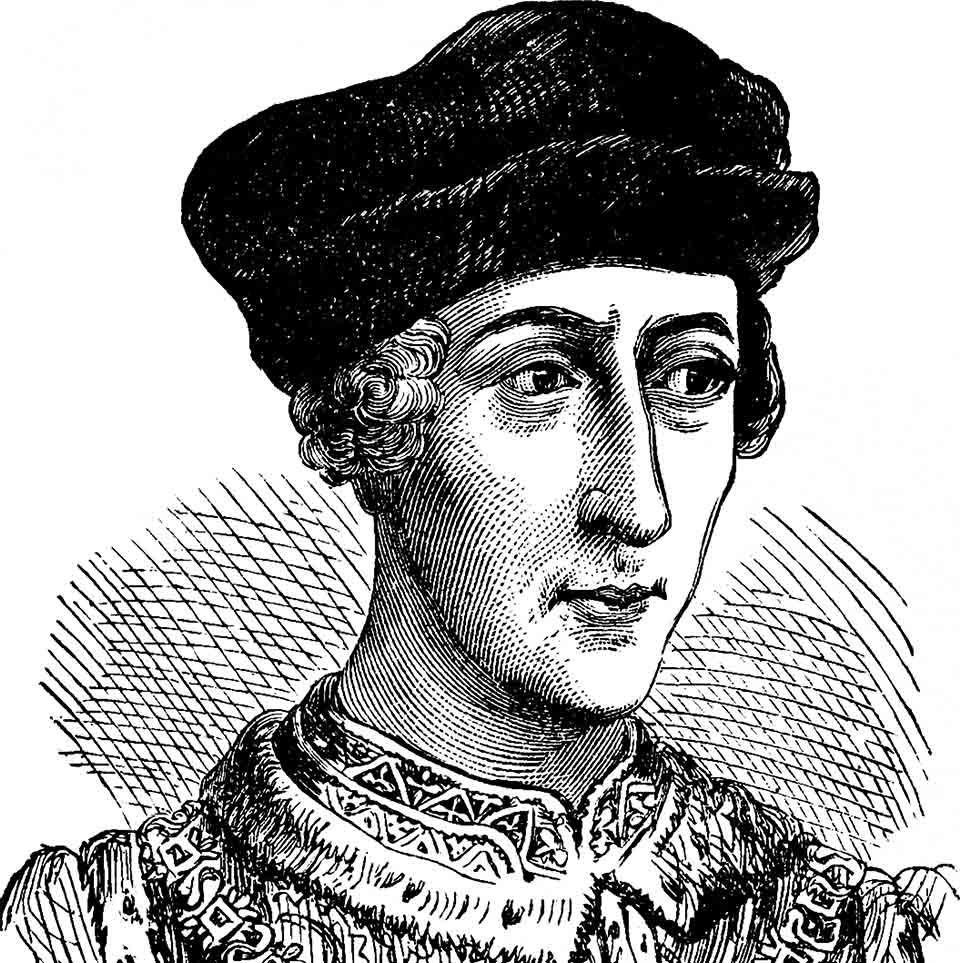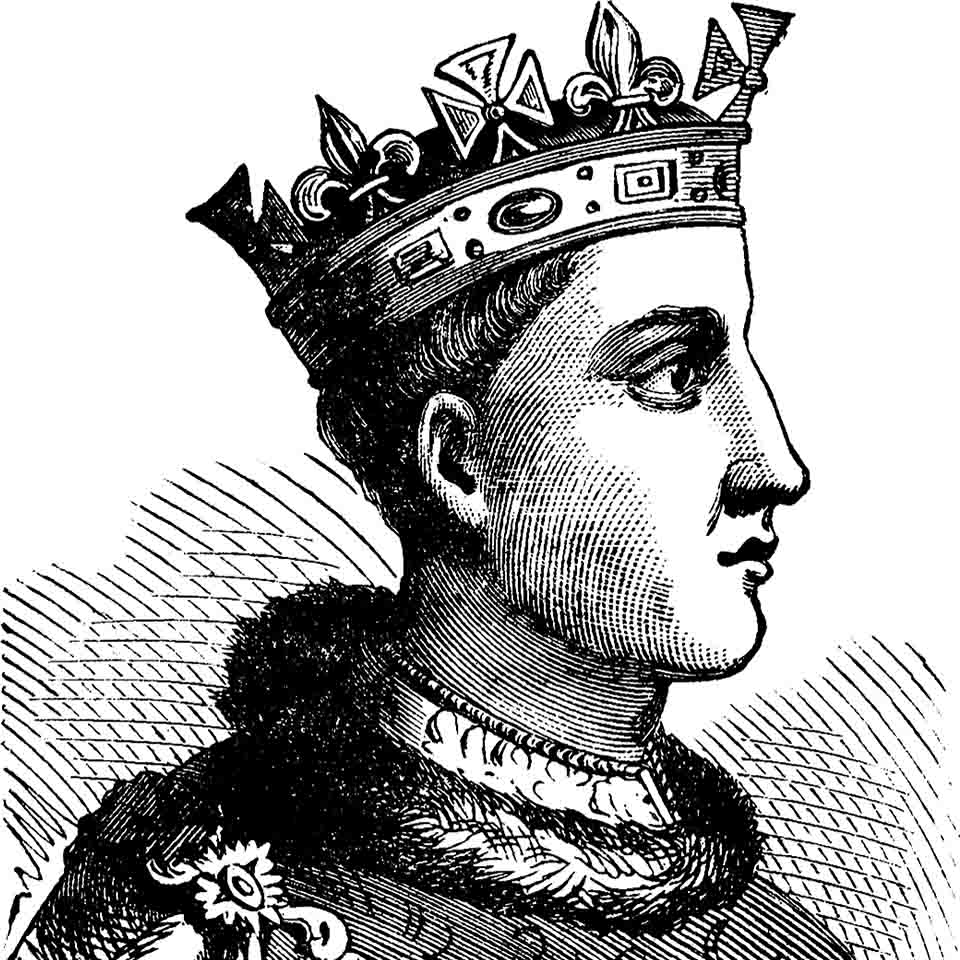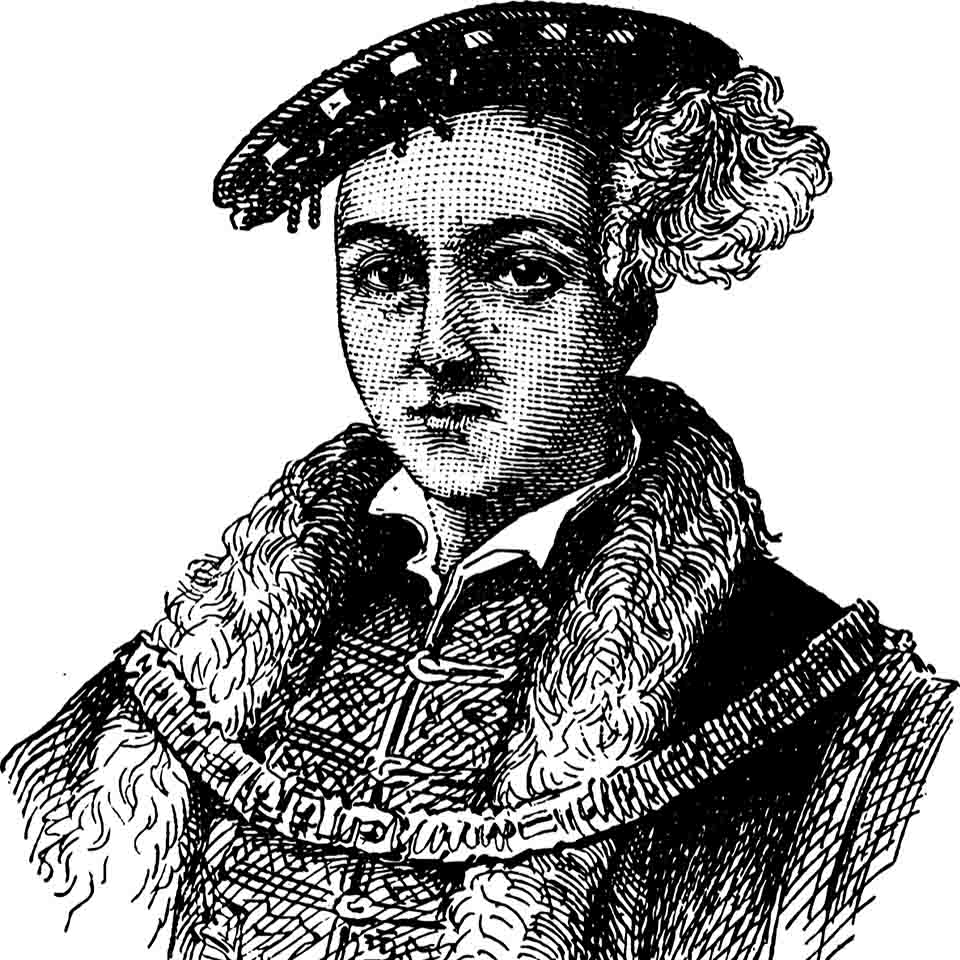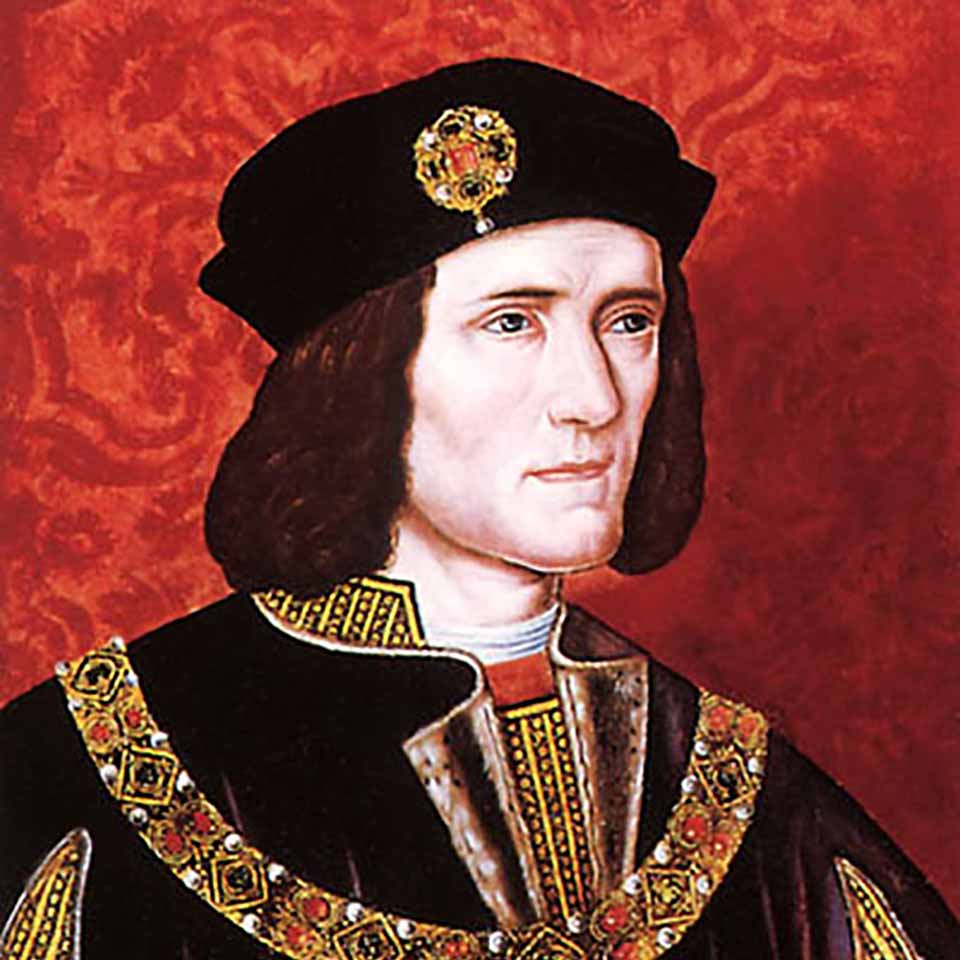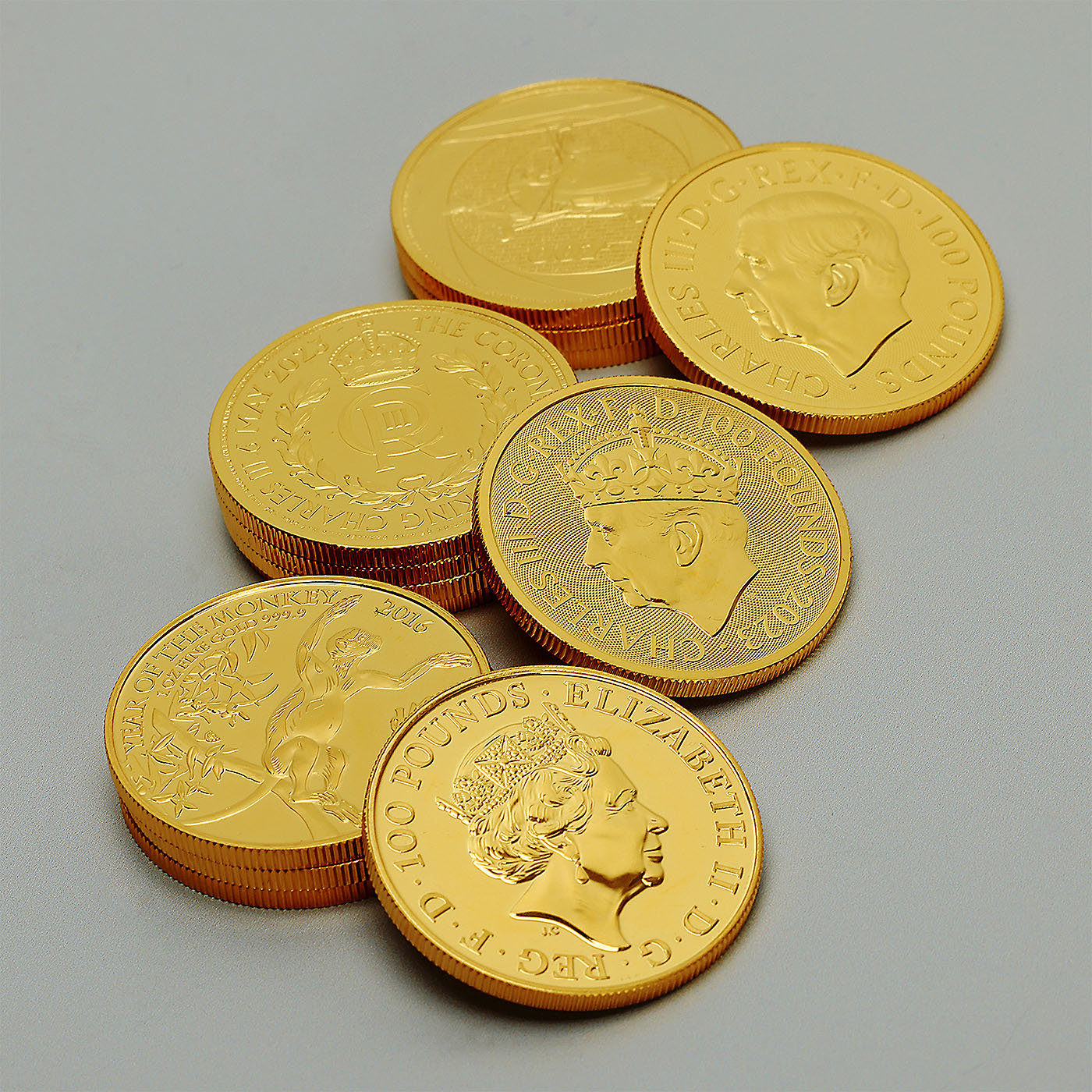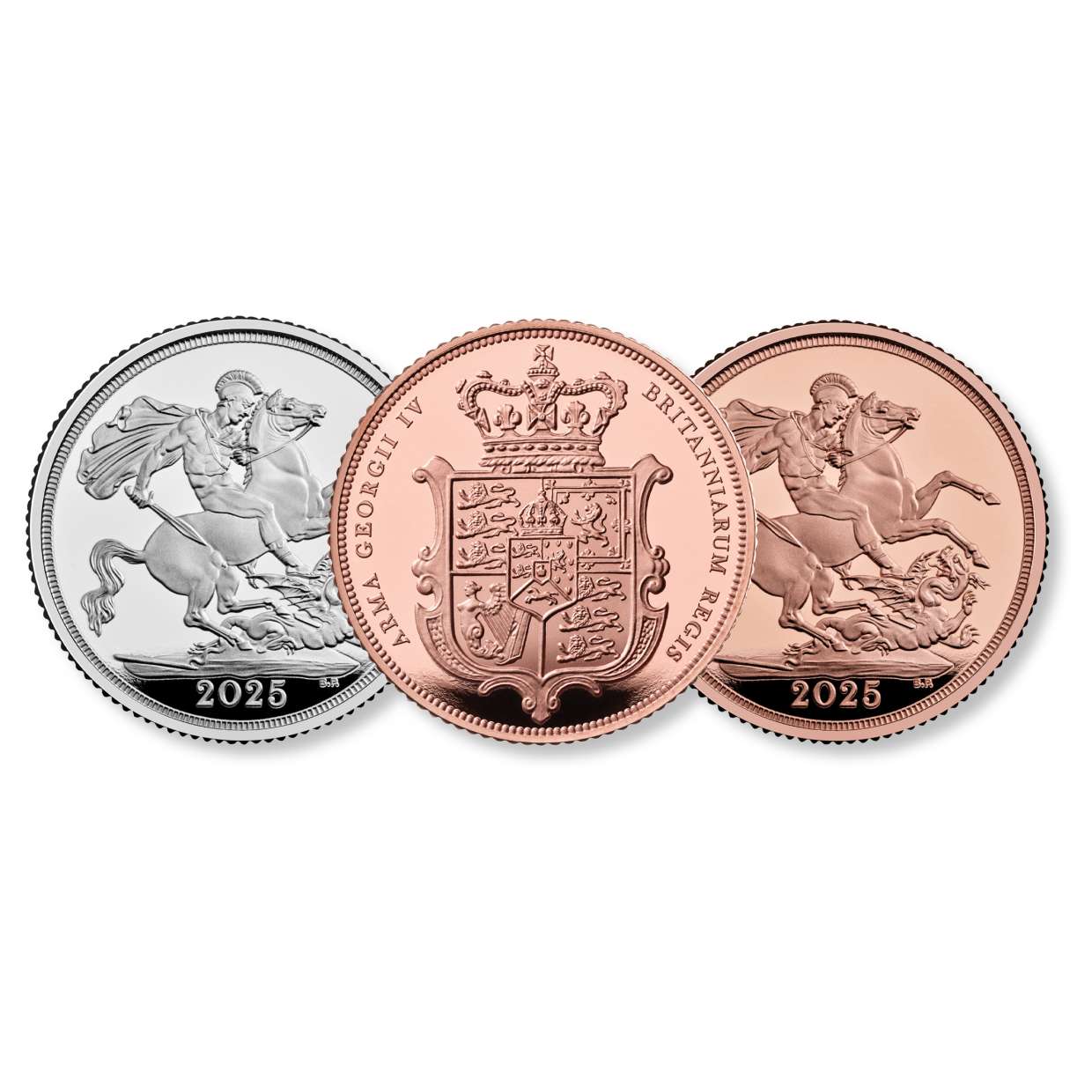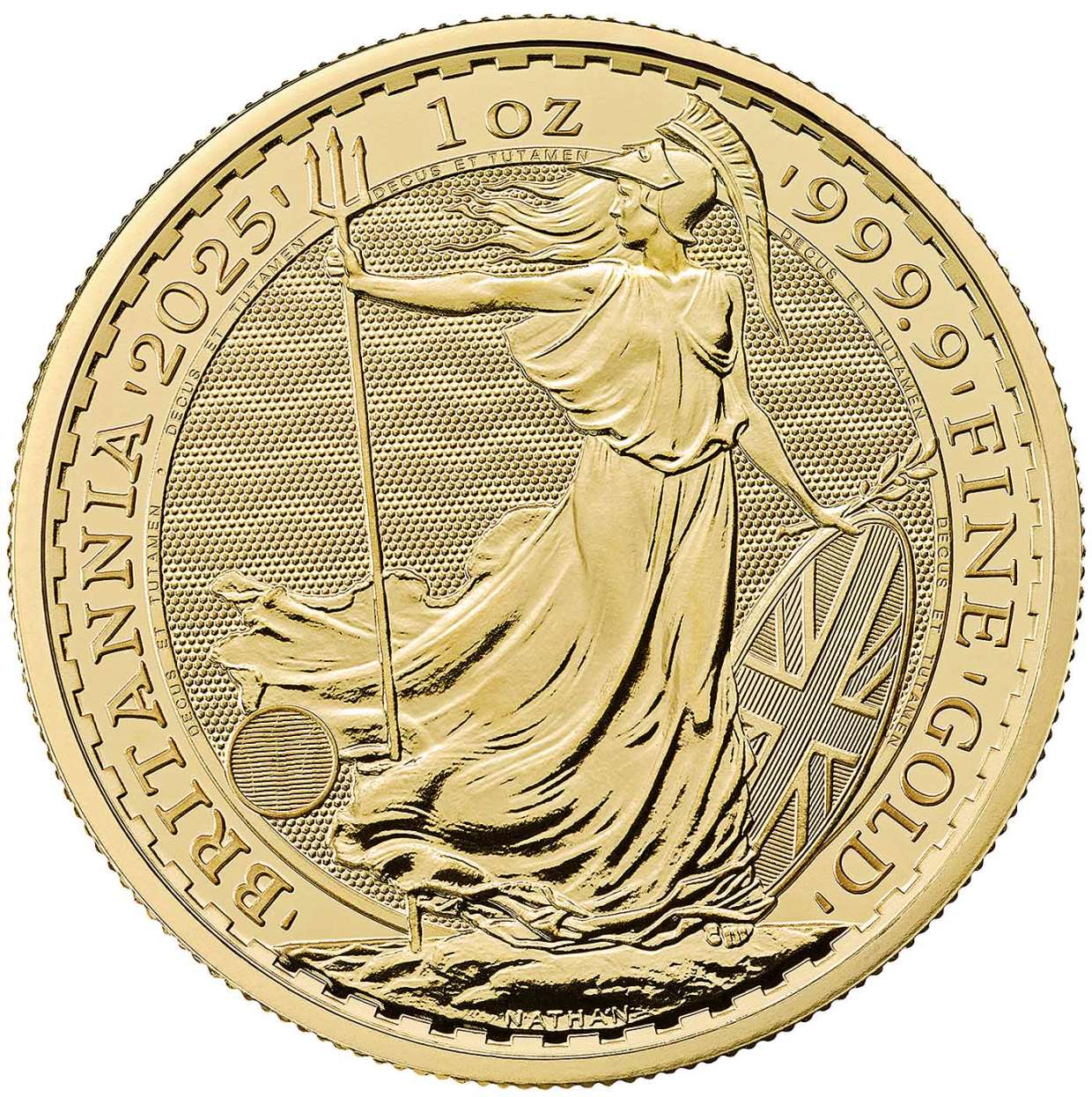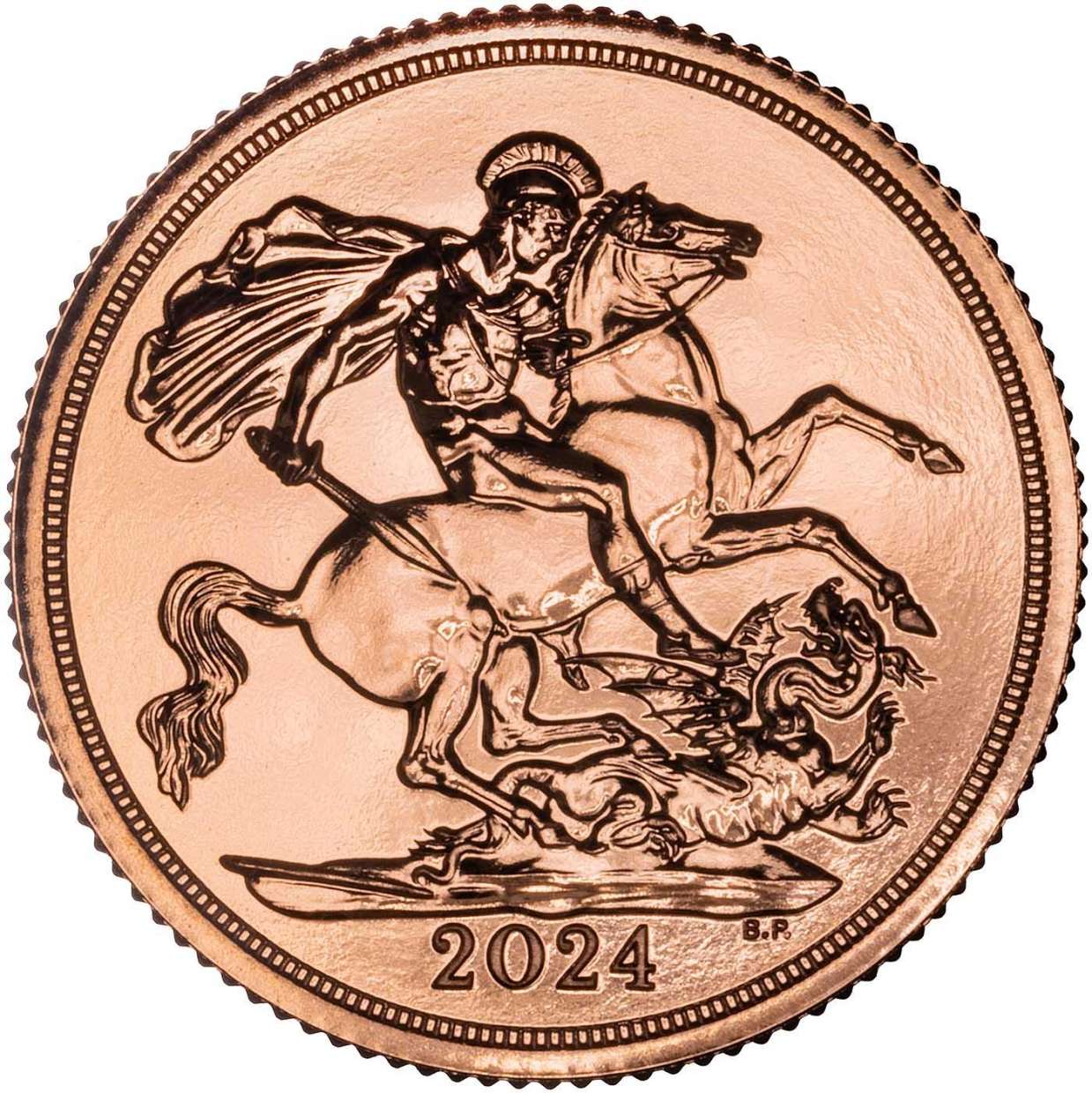King Edward III (1327 - 1377)
Synopsis
Edward III was born in 1312, son of Edward II and Isabella of France. Edward III was one of only five monarch in English history to reign for more than 50 years, and outlived his own son, Edward the Black Prince. The defining events of his reign were the beginning of the Hundred Years War and the emergence of the Black Death in 1348.
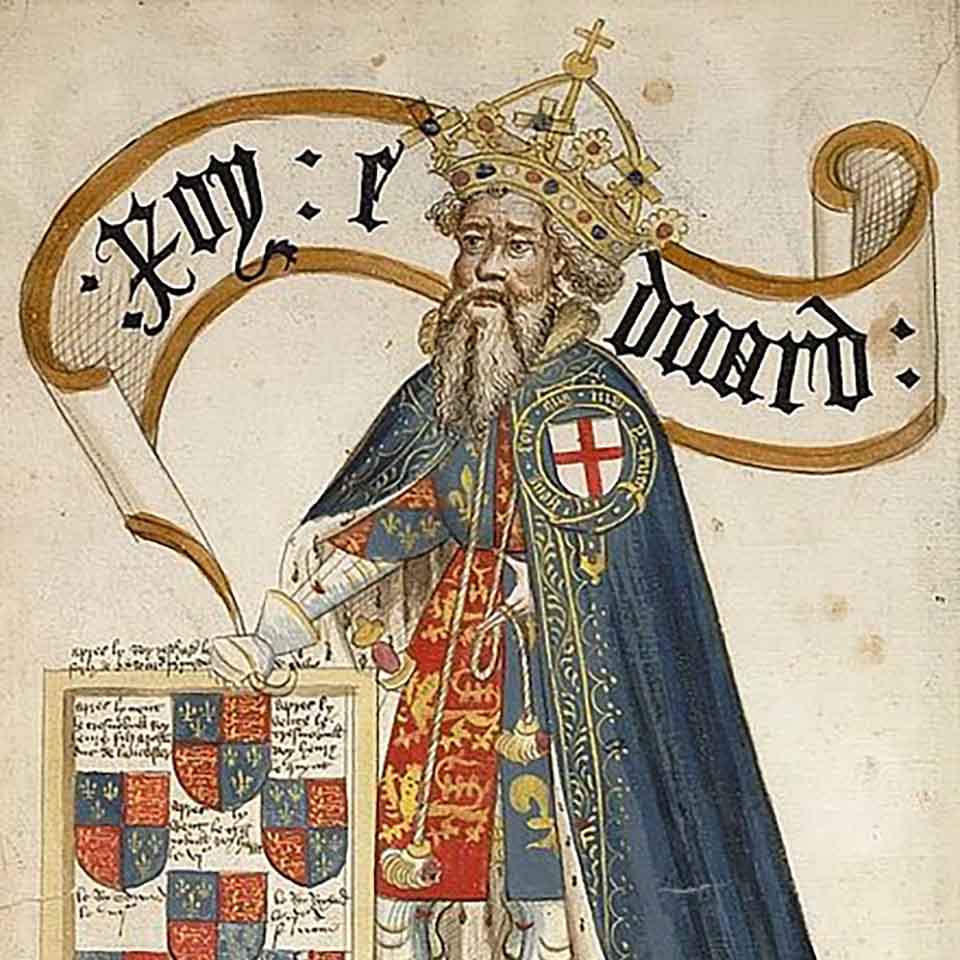
Early life
Prince Edward was born into an unhappy marriage between his mother and father. Edward II was probably bisexual and was notorious for having a string of male favourites whom he let run the kingdom to their benefit and to whom he granted the most outrageous favours, much to the annoyance of the nobility and in particular to his proud and high-spirited wife Isabella. Edward II made his son Earl of Chester within four days of his birth, and viewed him as an asset whose existence would protect his position at on the throne. However, when Prince Edward accompanied his mother to France in 1322 on a diplomatic mission to the French Court, Isabella remained there plotting and scheming with her lover Roger Mortimer to put Edward on the Throne in place of his father. They returned in September 1326 with an army and deposed Edward II, who was later captured and murdered at Berkley Castle.
Early Reign as Puppet King
The 14 year old Edward was placed on the throne, but the Dowager Queen Isabella and Roger Mortimer effectively ruled England in his name. Edward III deeply resented Mortimer and his mother for the role they had forced him to play in usurping and murdering his father, and for the contempt they, and especially Mortimer held for him, but for the time being, due to his youth, Edward III had no other choice but to accept the situation.
However, during the next four years, Rodger Mortimer's greed and arrogance proved to be his undoing, and Edward's opportunity. In addition to alienating the rest of the nobility by shamelessly granting himself various lucrative offices and titles, he made a step too far in March 1330 when he ordered the execution of Edmund, Earl of Kent, who was the younger son of Edward I (and therefore a prince of the royal blood). The death sentence that had been passed against Edmund proved very unpopular with the popular mood, and on the day of Kent's execution, it took five hours to find anyone willing (or daring enough) to carry it out. Eventually, a convicted murderer was found to carry out the execution in return for a pardon, and Kent was duly beheaded, much to the anger of the people and much of the nobility. The nearly 18 year old King observed these developments closely.
Edward III Takes Power
In October of that year, Edward III made his move. Encouraged by some of the disaffected nobles, Edward despatched a group of armed supporters to enter Nottingham Castle via a secret passageway, to were Isabella and Mortimer were sleeping. The two lovers were seized and brought back to London before the King. In spite of his mother's pleading, Roger Mortimer put to death. That he was hanged like a common criminal at Tyburn instead of beheaded as would normally befit a man of Mortimer's rank is an indication of the hatred Edward felt for the man who had seduced his mother, killed his father and usurped his Royal authority. Isabella herself was put under house arrest and kept under close observation for the rest of her life. At 18 years old, Edward III was now firmly in charge.
Edward III and Scotland
Having settled himself into power at home, Edward began to reconsider England's foreign policy. Mortimer had been responsible for highly unpopular Treaty of Northampton in 1328, ending the war with Scotland begun during the reign of Edward I. Although the war had turned out badly for the English under the lacklustre leadership of Edward II, the peace agreement signed by Mortimer in the name of Edward III had been regarded as humiliating by the English, as England effectively renounced all its rights with regard to Scotland in return for a humble indemnity of £20,000. Following Edward's assumption of power, the King began to take steps to renew the war against Scotland, and tacitly supported Edward Balliol, son of the deposed Scottish King John Balliol, in his claim to the Scottish throne. Balliol, backed by English arms and money, marched north and defeated the troops loyal to the infant King David II before being crowned at Scone as King of Scotland. The Scots soon recovered from this defeat however, and drove Balliol back into England. Edward III then took an Army north to Berwick upon Tweed (then a Scottish town) and besieged it. The Scottish Army responded by marching south to its relief, where they met the Army of Edward III at Halidon Hill on the 19th of July of 1333.
The battle was a crushing victory for Edward. The Scottish Army was all but destroyed, with most of its leaders (including its commander, Sir Archibald Douglas) killed or captured. Edward III had demonstrated that he was made of the same stuff as his great warrior grandfather, and set the stage for his even greater successes on the battlefield. Despite the stunning victory at Halidon Hill however, the Scottish party loyal to David II recovered enough to prevent Balliol and Edward III from consolidating their gains in Scotland, but within a few years, Edward III had begun to focus his attention elsewhere…
Tensions with France
During this period, tensions with France were growing. Technically, the King of England was a French subject who owed allegiance to the King of France for their holdings in France which English kings had held since the time of the Norman conquests. Naturally, the Kings of England had always felt that owing such allegiances to a fellow and foreign king was beneath their dignity and they usually refused to pay homage. Consequently, Philip VI had invaded and occupied many of England's holdings in France. In response, Edward III claimed the throne of France though his mother Isabella on the grounds that he was the only remaining grandson of Philip IV of France, whereas under French Salic law, the right to inherit the throne could only pass via the male line. Even by the standards of male preference primogeniture by which Edward III claimed the throne by, the claim was dubious. Charles (the Bad) a grandson of Louis X, Isabella's late elder brother, was born via his eldest daughter Joan II of Navarre in 1332 and would therefore technically have had a senior claim to the throne if Joan did not claim the throne herself as a woman.
It is likely however that Edward III intended to use this claim as a bargaining chip so that he could win back his possessions and hold them as sovereign lands rather than as French fiefdoms, and that this was not a serious attempt to actually take the throne of France.
Open Hostilities Break Out
In 1337, Phillip VI declared Gascony, an English possession; forfeit to the French crown due to Edward III's refusal to pay homage. Things did not go well for Edward III at first. He invaded France via the Low Countries but had achieved nothing except for vastly depleting the treasury in the process, eventually forcing him to retreat and worse, default on his debts. Meanwhile, French ships raided the English coast almost at will and an invasion of England was prepared.
However, in 1340, English forces won one of its most important victories of the entire war when the Royal Navy almost completely destroyed the French fleet at Sluys. This ensured that the prolonged conflict that would last for over a century would take place almost entirely on French soil, sparing England from the devastating effects of having armies from both sides ravaging the countryside. In 1341, Edward III gained a further foothold on the continent by taking the side of John of Montfort during the war of Breton succession. In 1346, Edward III himself landed an army at Normandy and rapidly seized Caen, forcing the French king to face the English army in open battle, where Edward III won his most famous victory at Crecy, in which the French army was devastated. A few weeks later, an English Army in northern England won an equally devastating victory over Scotland at the Battle of Neville's Cross, resulting in the capture of their King, David II. These victories left the French in no position to protect Calais, which was besieged and captured the following year, vastly improving Edward III's strategic position. Edward III's forces seemed almost unstoppable, however, one of the worst disasters in European history would soon have a devastating effect on both sides of the conflict.
The Black Death
In 1348, the first signs of an epidemic that would ravage every country in Europe broke out, greatly reducing the population of every realm in Christendom and beyond. While estimates vary enormously (due to the inadequacy of surviving records), by the time the worst was over in 1450, England had lost at least 20% of its population and maybe as much as 40%. The situation in France was even worse, where some estimates suggest that as much as 75% of the population was lost. Edward III's own daughter Joan died of the plague in 1348 as she was travelling to Castile to marry the Spanish prince Peter of Castile.
The Black Death also had some radical social effects on England, although the full consequences would not be felt during Edward III's lifetime. Perhaps the most important of these was the effect it had on the peasantry. By wiping out a significant proportion of the population, the surviving peasants and artisans could demand higher wages and better working conditions, which the nobility and the crown were reluctant to grant. In 1349, Edward attempted to defy powerful market forces by issuing the Ordinance of Labourers, in which it was specified that wages and prices should remain at pre-plague levels. However, as with Roman attempts to control wages and prices under Diocletian, these acts failed to achieve the purpose for which they were intended. They did however; succeed in creating a significant source of discontent amongst the peasantry which would eventually be a major contributory factor leading to the Peasant's revolt of 1381 under Edward's grandson Richard II.
Conflict with France Resumes
By 1456, the plague had subsided (although it did not go away entirely) and England had recovered sufficiently to be able to resume the conflict with France, and Edward III dispatched his son, Edward, Prince of Wales (better known today as the Black Prince) to launch another expedition against the French under their new King, John II. Under the command of the Black Prince, English forces won yet another devastating victory at Poitiers, during which the King of France was captured. The English demanded a huge ransom for the return of the French King. Meanwhile, France collapsed into virtual anarchy and England's position in France was solidified.
Although England was virtually unbeatable on the battlefield thanks to its longbow tactics, the low English population relative to that of France meant that providing enough soldiers to form a sufficient garrison for each the towns it held was difficult. By the simple expedient of avoiding open battle with the English, the French armies could go wherever the English army was not, and retake captured towns, although they themselves were limited in their abilities to do this due to their own internal problems, including a peasant revolt in 1358. In 1360 therefore, the Treaty of Bretigny was signed in 1360. The treaty was a compromise in which Edward III surrendered some of his gains in return for holding his remaining French territories free from any obligation to the King of France. In addition, Edward gave up his claim to the French throne. It was also agreed that a hefty ransom would be paid for the return of John II, who was released on parole, but returned himself to the English in 1363 when his son, who had been surrendered as a hostage, escaped. He died in captivity the following year, to be succeeded by his son as Charles V.
Later Reign
In 1369, Charles V declared war on England again and started to push the English back. Edward's eldest son, the Black Prince, was preoccupied with fighting on the Iberian peninsula, and John of Gaunt was despatched to France instead to hold off the French. Unfortunately, John did not have the military aptitude of either his father or his elder brother, and by 1375, England's possesions in France were reduced to a few strips of land surrounding the coastal towns of Bordeaux, Calais and Bayonne. Edward III was now an old man, and no longer in a position to hold a commanding influence over his government.
At home, opposition to the Crown was increasing as Edward III descended into senility and English fortunes in France declined. John of Gaunt effectively took control over the interests of the Crown, but his authority was opposed by the Bishop Winchester and Edmund Mortimer, 3rd Earl of March. In 1376, the Black Prince died, to be followed the year after by Edward III himself. The King's grandson via the Black Prince, Richard succeeded as Richard II.
Legacy
Edward III is best known as a warrior king who led his forces to victory over the French at the Battle of Crecy in 1346, however, despite his considerable skills as a field commander, the latter part of his reign was marked by the decline of England's fortunes. Although the capture and holding of Calais gave plenty of scope for a revival of England's campaign for the French throne at a later date. The appearance of the Black Death, and his failed attempts to legislate against the social consequences of it had negative consequences for the Crown later on. The achievements of Edward III's reign were therefore mixed.
Numismatically, Edward III's reign is notable for the introduction of a regular gold coinage for the first time (in large part in order to provide a more convenient medium for paying the vast expenses of fighting the War in France). The short-lived denominations of the Florin (or leopard) and its half and double equivalents were briefly introduced, before they were supplanted by the noble and its half and quarter equivalents. The English mint at Calais was opened in in 1363, and in addition to striking silver issues according to the English standard, was responsible for producing most of England's gold coinage during Edward III's reign. Between 1351 and 1360, Edward's coinage reflected his claim to the French throne, with the legend on the obverse describing him as the 'King of France' as well as England. On the gold coinage, his coat of arms contains the Fleur de Lis of France as well as the Three Lions of England. These titles and symbols disappeared briefly following the signing of the Treaty of Bretigny in 1360, but appeared again in 1369 following a renewed outbreak of hostilities.
A history of Kings and Queens of England - Learn more about the Kings and Queens that reigned England throughout the different monarch dynasties (1066-2022).
Related Blog Articles
This guide and its content is copyright of Chard (1964) Ltd - © Chard (1964) Ltd 2025. All rights reserved. Any redistribution or reproduction of part or all of the contents in any form is prohibited.
We are not financial advisers and we would always recommend that you consult with one prior to making any investment decision.
You can read more about copyright or our advice disclaimer on these links.

